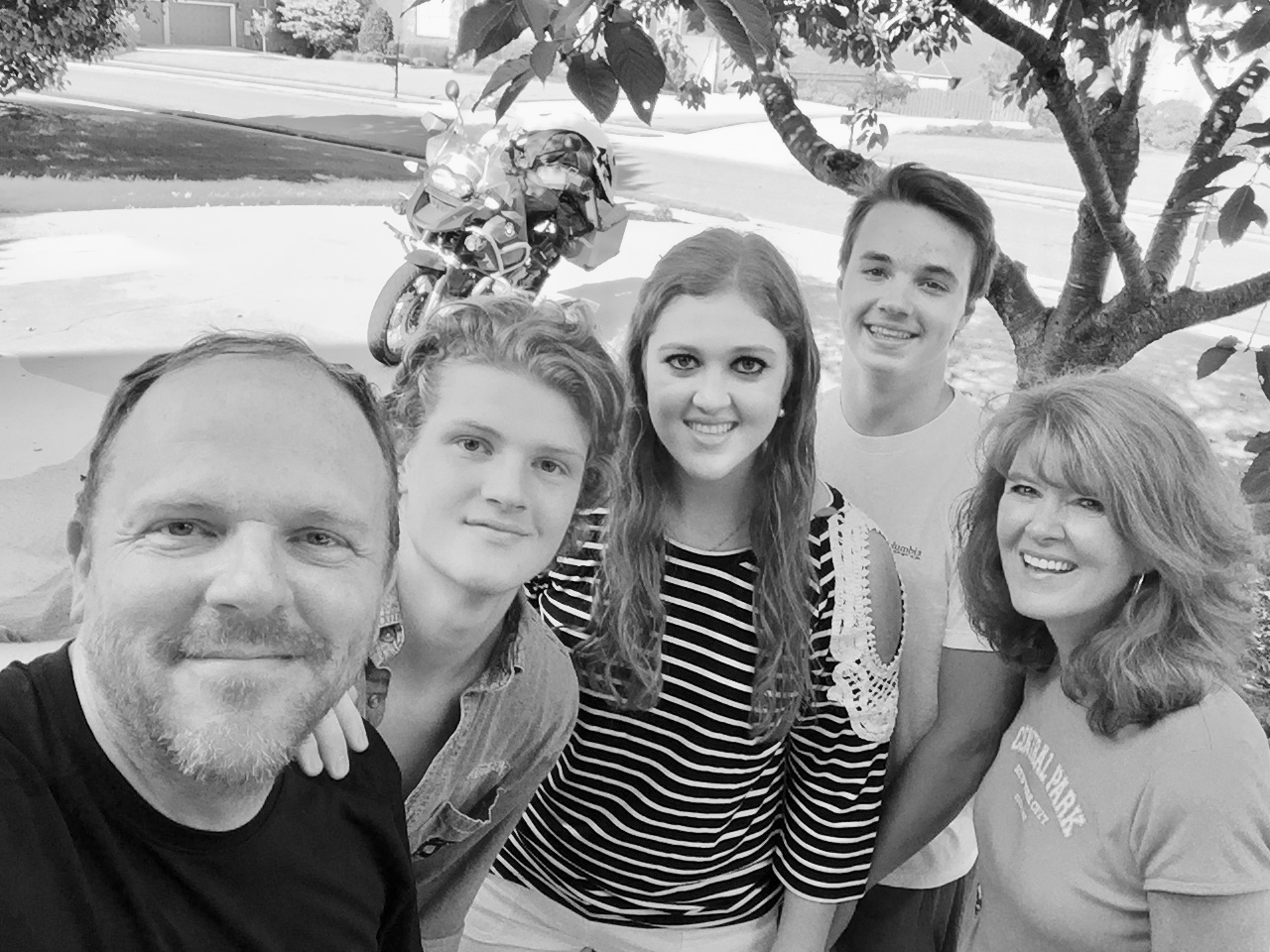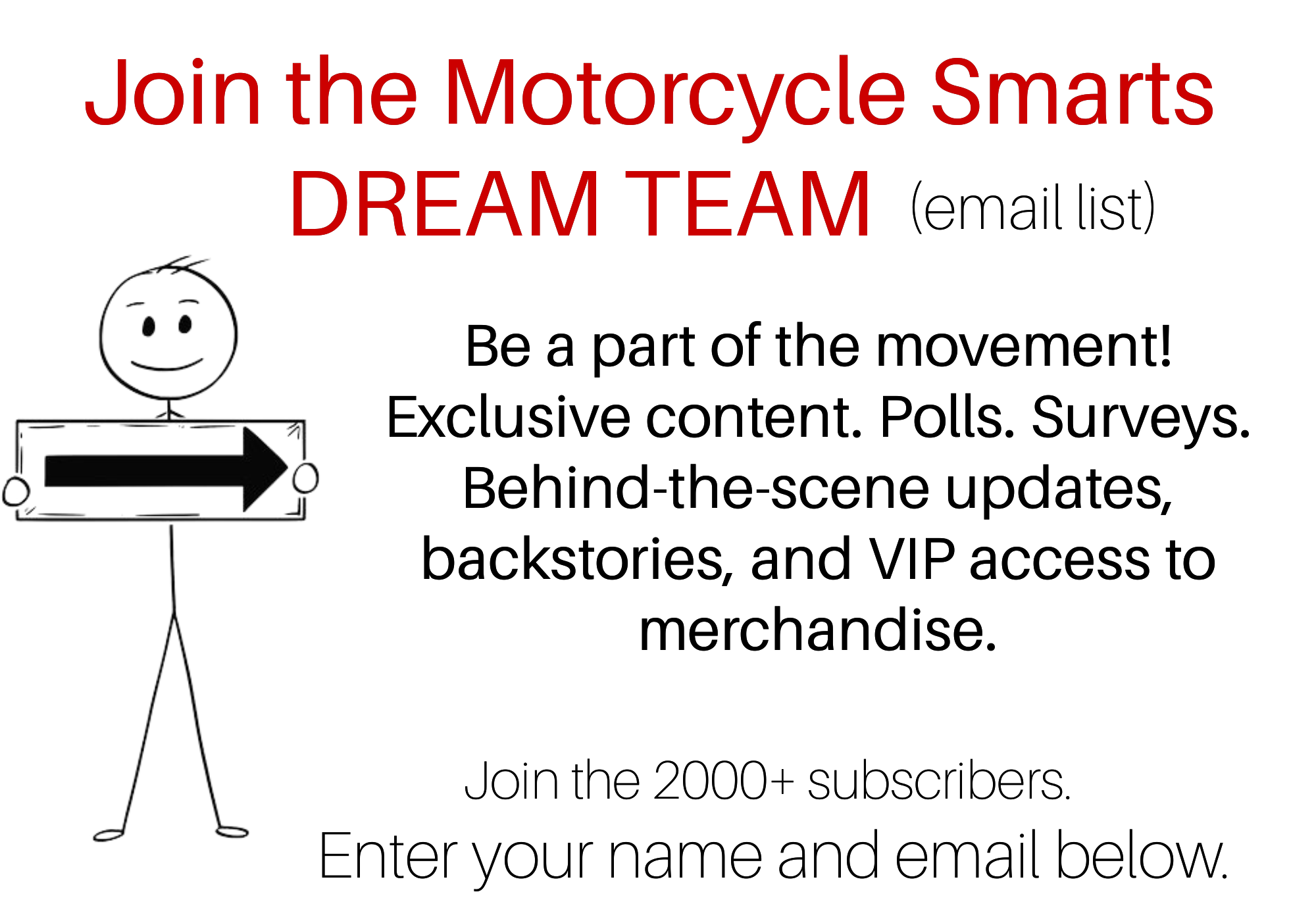Hi, I’m David Mixson
Hi, I’m David Mixson

I’m an engineer, author, podcaster, bourbon nut—and a few other things.
The Beginning
I fell in love with motorcycles when I was twelve and bought my first real one when I was forty. I’ve been studying them and sharing what I’ve learned along the way ever since.
When I first started riding, I was overwhelmed with fear—and wondered if I was being selfish for wanting to ride. I consumed everything I could find about riding. I devoured every book I could get my hands on. I practiced what I learned. And I found two men willing to be my motorcycle mentors.
The Middle
I quickly became frustrated with how the old-school motorcycle mega books from the past glossed over some of the most important topics like lowside and highside crashes (what are they, what triggers them, and how riders can avoid them), the importance of ABS, and rider fear.
In the basement of my house back in 2007, I pulled out a perfectly typed set of notes ten pages long and placed it in front of my mentors, Fred and Pete. With more confidence than I deserved, I proclaimed:
“Someday, I’m going to explain motorcycles my way.”
Over the following years, I started a podcast, wrote three books, and made a dream ride from Alabama to Alaska with my best friend, Mike. My second book, Motorcycle Dream Ride, tells the story of our adventure.
My passion is taking complex topics and making them simple to understand, which is the only way I made it through engineering school. As an example, I did this explaining highside crashes here.

Arriving at home from his dream ride to Alaska.
To everyone who has read one of my books and left a kind review, listened to one of my podcasts, or sent me a note of encouragement—THANK YOU!
The Recent
In 2023, I made a very personal decision to stop riding. It was difficult for me. Rest assured, I’m more passionate about explaining motorcycles my way than ever before. You can learn more about my decision to stop riding here.
I retired as an engineer from NASA (the space place) around the same time. With more available time, I’ve completely redone this site by adding some of the best content from my two skills books.
It seemed like the right thing to do.
The Future
My next steps involve promoting this site and my books with the hope of helping riders avoid avoidable crashes. To do this, I’m offering to give away my two skills books, Motorcycle Smarts and Motorcycle Hacks, to rider coaches who request them. Learn how to do that here.
By allowing sponsors who believe in my mission, I’ll also be able to provide more free resources to riding clubs and rallies. From there, I plan to do what I can to get Congress to Federally mandate ABS (and ESC) on all motorcycles sold in the U.S. for on-street use.
I honestly believe if Congress and the NHTSA would look at my explanations of lowside and highside crashes (here and here), they would better understand that the main reason all on-street motorcycles need ABS has little to do with stopping distances, and everything to do with preventing rider-induced crashes.
You can read my Open Letter to Congress here and learn more about my purpose and vision here.
In the end, my passion has always been to help one rider—which is exactly what my motorcycle mentors did for me.
—David
Important Links
Warning
Every time I suit up to ride, I weigh my options and evaluate my risks. As long as the pleasure of riding overshadows the additional exposure, I’ll continue to throw a leg over and strap on my helmet. When it doesn’t, I’ll stop riding.
The risks are real. Motorcycle crashes—sometimes caused by negligent drivers—can cause serious injuries, even death. In my books and on this site, I attempt to present accurate information that will ultimately make you a safer rider. But I’m human. My advice may not apply to every rider in every situation. Please seek lessons from a licensed instructor.
Ride safely and at your own risk.
David is NOT a motorcycle instructor. He’s just a mechanical engineer who loves dissecting how motorcycles work. He also enjoys taking complex ideas and making them simple to understand. David worked at NASA (the space place) for over thirty years. He left in 2022 to write and pursue other callings.
David is passionate about helping authors, training organizations, and the business sector—and would be happy to help on a consulting basis if it’s a good fit. Contact info below.
david@motorcyclesmarts.com
You can also find David on LinkedIn, where he mostly writes about space.

We hate SPAM too.
Unsubscribe at any time.
David Mixson writes about the topics other motorcycle books gloss over. He worked as a NASA engineer for over thirty years and is the author of three books.

